Difference between OEM and ODM?
What is an Original Equipment Manufacturer (OEM)?
An Original Equipment Manufacturer or OEM is a company that manufactures and sells products or parts of a product that their buyer, another company, sells to its own customers while putting the products under its own branding. OEMs commonly operate in the auto and computer industries.

An OEM is often the direct client of a retail company that sells directly to consumers. For instance, a Lenovo laptop computer’s parts aren’t all manufactured by Lenovo. Some parts, such as its processor or memory module, may be the products of an OEM.
Original Equipment Manufacturer vs. Value-Added Reseller
Essentially, Value-Added Resellers or VARs sell products from an OEM but incorporate certain added features before doing so. The two share a mutually beneficial relationship, as VARs help OEMs sell their products and OEMs entrust their products to VARs, allowing them to sell them with more features that will enhance the operation of the products.
Original Equipment Manufacturer vs. Aftermarket
While an Original Equipment Manufacturer produces original equipment, an aftermarket manufacturer, on the other hand, makes products that are made to look like and work interchangeably with those of the OEM.
In simpler terms, the parts are not original products because they’ve been manufactured by companies, locally-based or foreign-based, without approval from the OEMs to produce such products. Though usually cheaper, the products are not guaranteed to function as well as the OEM product.
Example of an Original Equipment Manufacturer
To better illustrate how OEMs work, let’s consider an example. Say Company A is into manufacturing memory cards. They will not produce only one type of the product but several versions of it, which are then, in turn, sold to various computer manufacturers/retailers. Those companies are value-added resellers who market directly to the public.
Other Characteristics of an Original Equipment Manufacturer
1. OEMs sell licenses
OEMs typically sell product licenses to use their parts to the value-added resellers they market to.
2. OEM for hardware
Hardware can be easily bought off the internet, whether from a retail product manufacturer or through an OEM. However, OEM hardware is usually shipped incomplete of parts such as cables and adapters that are necessary for the installation and operation of the hardware.
3. OEM for software
OEM software, like the hardware, usually doesn’t come with a lot of stuff, except for the basic software and its license key.
Benefits of Buying Original Equipment Manufacturer Products
Here are some benefits one gets from buying OEMs:
1. Good quality
And why not? After all, an OEM product is the same product manufactured by the original manufacturer. Though there are cheaper versions, the price of the OEM product reflects its quality.
2. Durability
Such products are usually not only of good quality but are also durable. For example, when buying a spare tire, an OEM tire is typically better than getting an aftermarket tire because one can be sure of the materials used in making it.
3. Lifespan
OEM parts often have a longer lifespan than aftermarket parts.
ODM (Original Design Manufactures)
Let’s now come to the concept of ODM. Suppose you have ideas for your product; That can be done at this in your product; But you do not have the design. Then you go to a company and tell your idea; And told them to make the device or product what it would be like to create. Then the company or ODM will tell you yes we have designed this or the product can be like this; This way they will showcase various designs in front of you.
Then you will order if you like; Then you will give that logo; The box that will give you the motherboard, they will produce the product and give it to you. But there is no control or ownership of design here. Here’s all the patents of the design that are near the ODM. For example, Quanta can be named; Those laptops like Dell, HP, and Lenovo have prepared laptops.
Now Dell will make their Inspiron model’s new laptop; Here they can not take any decision from themselves. They will have a meeting with Quanta to tell them, look at this idea of us; Now you say how it can be made. Then the Quanta laptop is ready; Dell is marketing it.
Rebound and Copied Products (ODM Products):
Now the concept of a copy or a rebranded phone; What actually happens there is that. Your company needs a new phone; Do you want to go to any ODM? They will show you a complete catalog like a restaurant menu; Then say we have this phone, this is the specification; You said what you need? Now, whatever you like, they will deliver the phone as soon as you want.
If you need a logo, the box that you can take it through an ODM. Now suppose Walton copied a phone a few years ago to Gionee’s. In this case Gionee’s ODM was that Walton went to the ODM and the model has ordered [with a refurbished phone] with their logo. Here the ODM is all ready; Because the design patents, the IP is all in them. Then after ordering it came straight from Bangladesh. This is basically the concept of ODM.
But here is the R & D or the topic of research and development; That is not being done on the client side. Apple is now making its own process by faxing it, and it’s a different thing; Samosang is the same. But their only concern for the companies of our country; Make our phone; China’s ODM phone can not be made by making them money; After that we will do that marketing; Do business. Now if we look at the online stores; But I see a lot of VR Glass; Design is different from the same price and the company name is different. Here’s the VD Glass of ODM of the same design; They are just making it for different companies in exchange for money. These are ODM Products or Refrnded Products.
Now there are different names in different countries of the world; But inside it is the same thing. If a company says here that we’ve developed and researched it would be cheating customers. Hope to understand the matter of OEM and ODM. Learn more about how to create a copy or a rebranded phone.
Difference between OEM and OEM?
The pros and cons of becoming an OEM
There are cost benefits to being an OEM, from a product development standpoint. One of the big pros is that you will have few if any costs associated with researching, designing and testing new products – clients will bring their ideas to you, and you just have to be able to make them.
Additionally, you may not need to upgrade your facility yourself to produce custom products for big clients. A lot of the time, OEMs pass on the cost of new tooling and moulding equipment to their clients in the form of up-front fees, or by building them into their pricing. Of course, this may mean they have more leverage over your facility and can demand that you only use the equipment to service their needs, but even in that scenario you’re getting an upgrade that you pay comparatively little for.
The flip side, however, is that there are a lot of OEMs on the market. The global healthcare OEM market alone is worth US$250 billion, with 40% of facilities residing in North or South America. That means, right out of the gate, you will have strong competition in a lot of specialist niches and will need to work harder to differentiate yourself and grow your customer base.
The pros and cons of becoming an ODM
As an ODM, you will be able to produce a highly cost-effective facility. Because you get to choose your own products, you can also select and build equipment and processes that best increase the efficiency of producing those products. As you become more experienced and, perhaps, specialised, you will likely be able to continue to improve this efficiency with further upgrades such as automation and specially designed manufacturing software.
Another way to increase cost efficiency is to get really good at selling your white label products to clients. ODMs with white label opportunities can find themselves expanding revenue rapidly compared to other manufacturers as they are able to offer market-ready products to a host of brands without reinventing the wheel for each contract.
Of course, it all comes at a cost – and that’s one of the major cons to point out. The up-front costs of becoming an ODM can be steep. Selling your own products means designing them, which means going through the costly R&D process in order to find market opportunities and produce products that you can capitalise on. Then comes the marketing budget, as you seek out clients to purchase those products.
Which is right for my manufacturing business?
This is ‘how long is a piece of string’ question, and you’ll need to identify the right path for your circumstances.
On one hand, the OEM business model enables you to build a specialised facility capable of producing high-quality goods for potentially major brands. By taking this path you can become an expert in your niche and find your business associated with some of your industry’s most beloved products.
On the other hand, the ODM model is more suited for businesses with expertise that goes beyond making products, and have big ideas for their own unique ways to capture market attention. This often suits companies that already have great product ideas but don’t necessarily want to invest the marketing budget in building their own brand. They can package up their unique IP and sell it on to consumers via the brands they already know and love.



